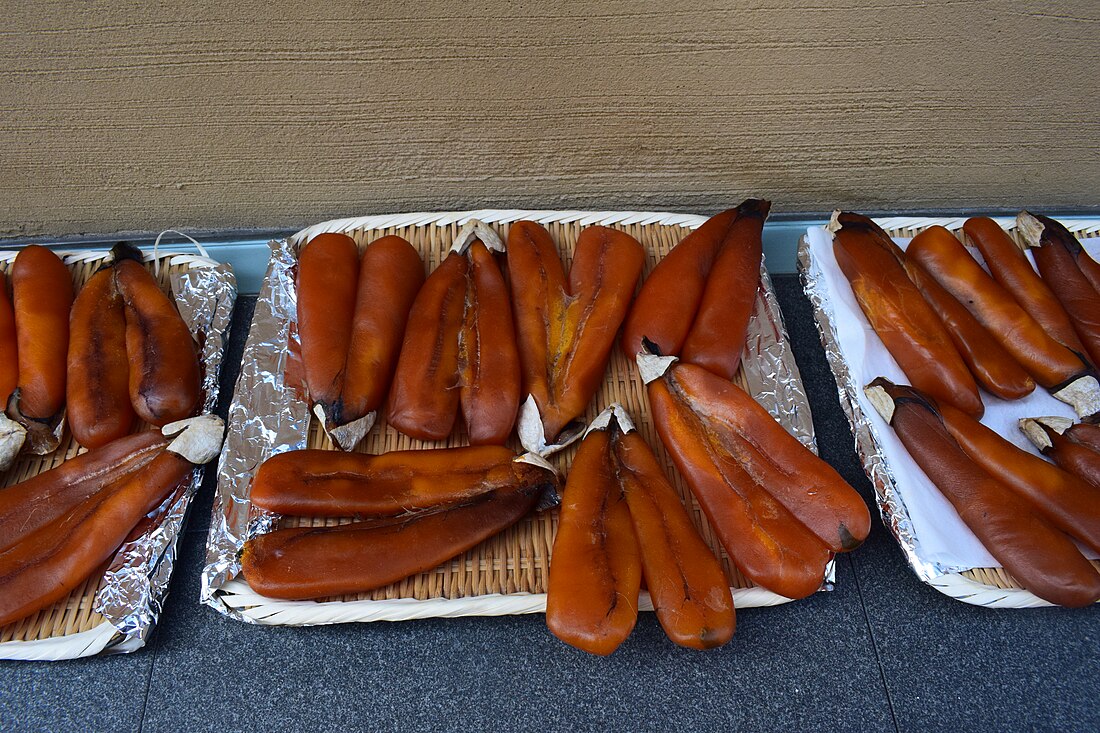Top Qs
Timeline
Chat
Perspective
Chinmi
Japanese term referring to rare food delicacies From Wikipedia, the free encyclopedia
Remove ads
Chinmi (珍味) is a Japanese term meaning literally "rare taste", but more appropriately "delicacy". They are local cuisines that have fallen out of popularity or that are peculiar to a certain area. Many involve pickled seafood.[citation needed][1][unreliable source][failed verification] [2][unreliable source][failed verification]
This article needs additional citations for verification. (October 2023) |

Remove ads
List of chinmi
Hokkaidō area
- Hizunamasu
- Ikanankotsu – Cooked soft bones of squid
- Kankai – Dried Komai fish. It may be eaten as is, or broiled and eaten with a sauce made by mixing mayonnaise and soy sauce and sprinkles of red pepper powder.
- Kirikomi
- Matsumaezuke
- Mefun
- Saketoba – A smoked salmon
- Tachikama
- Uni
Tōhoku area
- Awabi no Kimo – Ground internal organs of abalone
- Donpiko – The heart of a salmon. As only one can be taken from a fish, it is very rare.
- Hoya – sea pineapple
- Momijizuke – Shreds of fresh salmons and Ikura pickled together
- Tonburi – A speciality of Akita prefecture. The dried seeds of the hosagi plant.
Kanto area
Chūbu area
- Fugu no Ranso no Nukazuke – detoxed blowfish ovary in rice-bran
- Hebo
- Ika no Maruboshi
- Inago no Tsukudani
- Konowata
- Kuchiko
- Kurozukuri
- Zazamushi
Kinki area
- Daitokuji Natto
- Funazushi
- Kinzanji Miso
Chūgoku area
- Hiroshimana
Shikoku area
Kyūshū area
Okinawa area
- Tofuyo
- Umibudo – A type of edible seaweed with tiny seeds that hang from its stems
Remove ads
See also
References
Wikiwand - on
Seamless Wikipedia browsing. On steroids.
Remove ads
